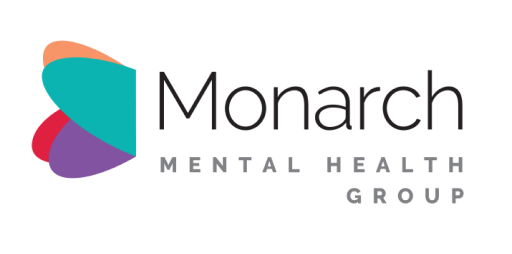What is OCD?
Obsessive-Compulsive Disorder (OCD) is a chronic and debilitating mental health disorder characterised by distressing, intrusive thoughts (obsessions) and repetitive behaviours or mental acts (compulsions). With an estimated prevalence of 2-3%, OCD can impose a significant burden on individuals, consuming an immense amount of time and inflicting distress that can impact relationships with family, friends, and colleagues. Despite the availability of pharmacological and cognitive-behavioural interventions, a significant proportion of individuals with OCD continue to experience residual symptoms and functional impairment. As a result, there has been a growing interest in exploring alternative treatment modalities, such as Transcranial Magnetic Stimulation (TMS), in the treatment of OCD.
TMS for OCD
TMS is a non-invasive neuromodulation technique that involves the application of localised magnetic fields to specific brain regions, leading to the induction of electrical currents and modulation of neuronal activity. Randomized controlled trials and meta-analyses have consistently demonstrated that repetitive TMS (rTMS) applied to relevant target brain regions can significantly reduce OCD symptoms [1, 2]. Evidence also suggests that TMS may also improve the overall quality of life and functional outcomes in individuals with OCD [3]. Most recently, studies have demonstrated the efficacy of deep TMS (a modified form of TMS) in relieving symptoms of OCD, consequently leading to its historic recognition as the first non-invasive device to obtain FDA approval for OCD treatment [4, 5).
What is deep TMS?
Deep TMS involves the use of electromagnetic coils placed on the scalp to generate magnetic fields that can penetrate deeper brain regions compared to traditional TMS. These magnetic fields induce electrical currents within specific areas of the brain, modulating neural activity and promoting therapeutic effects. As a non-invasive procedure, deep TMS is well-tolerated and does not cause any adverse or long-lasting side effects. It does not require a significant recovery period and can easily be integrated into a person’s treatment schedule.
Efficacy of deep TMS in OCD
A peer-reviewed, multicentre clinical study (2019) found deep TMS to be a highly effective OCD therapy, with over 33% of people with treatment-resistant OCD achieving a significant reduction in symptom severity [4]. They also found the improvement was sustained at least one month after the end of a 6-week treatment course. Furthermore, based on a post-marketing study of over 200 people living with OCD, deep TMS was found to have an even greater effect in a real-life clinical practice setting, with nearly 60% of people living with OCD improving [5].
Deep TMS for OCD: the BrainsWay protocol
BrainsWay’s deep TMS technology involves a patented H-Coil, held within a cushioned helmet fitted onto an individual’s head. A treatment session includes a brief, personalised provocation/exposure to activate the relevant areas of the brain, followed by an 18-minute TMS treatment. A full course of the BrainsWay protocol usually requires daily sessions over a 6-week period. As the procedure itself is non-invasive, most people do not experience any discomfort or side effects, with a minority reporting a passing headache following the session. With evidence supporting its ability to alleviate OCD symptoms, shorter session times, and minimal side effects, the BrainsWay deep TMS protocol is rapidly gaining recognition within the medical and mental health communities.
References
[1] K. A. Elbeh, Y. M. Elserogy, H. E. Khalifa, M. A. Ahmed, M. H. Hafez, and E. M. Khedr, "Repetitive transcranial magnetic stimulation in the treatment of obsessive-compulsive disorders: Double blind randomized clinical trial," Psychiatry research, vol. 238, pp. 264-269, 2016.
[2] M. P. N. Perera, S. Mallawaarachchi, A. Miljevic, N. W. Bailey, S. E. Herring, and P. B. Fitzgerald, "Repetitive Transcranial Magnetic Stimulation for Obsessive-Compulsive Disorder: A Meta-analysis of Randomized, Sham-Controlled Trials," Biological Psychiatry: Cognitive Neuroscience and Neuroimaging, vol. 6, no. 10, pp. 947-960, 2021.
[3] L. Jahangard et al., "Repetitive transcranial magnetic stimulation improved symptoms of obsessive-compulsive disorder, but also cognitive performance: results from a randomized clinical trial with a cross-over design and sham condition," Neuropsychobiology, vol. 73, no. 4, pp. 224-232, 2016.
[4] L. Carmi et al., "Efficacy and safety of deep transcranial magnetic stimulation for obsessive-compulsive disorder: a prospective multicenter randomized double-blind placebo-controlled trial," American Journal of Psychiatry, vol. 176, no. 11, pp. 931-938, 2019.
[5] Y. Roth et al., "Real-world efficacy of deep TMS for obsessive-compulsive disorder: post-marketing data collected from twenty-two clinical sites," Journal of Psychiatric Research, vol. 137, pp. 667-672, 2021.
Prabhavi is a research fellow at the Australian National University and Monarch Research Institute, dedicated to advancing the field of mental health through exploring novel brain stimulation techniques. She received her PhD from Monash University, where she conducted a pioneering pilot clinical trial that investigated the efficacy of transcranial alternating current stimulation (tACS) as a potential treatment for obsessive-compulsive disorder. Furthermore, as an accomplished scholar, Prabhavi has published numerous peer-reviewed articles in top-tier journals.
.png)
About The Author
Dr Ted Cassidy
Dr. Ted Cassidy is a psychiatrist and co-founder of Monarch Mental Health Group in Australia, which provides innovative treatments for depression, PTSD, and anxiety. Monarch Mental Health is recognized as Australia's first outpatient clinic offering assisted therapy and is the largest provider of outpatient magnetic stimulation therapy.

